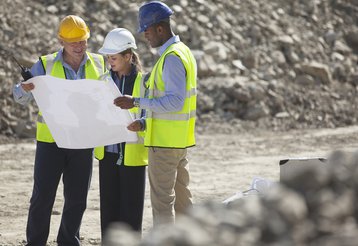Labor shortages and raw materials costs are some of the problems being faced by the European construction industry, as it tries to keep up with the tech industry.
A report released by Linesight this week said that increased demand in the high-tech and data center sectors is exacerbating the challenges in the European construction industry.
Labor shortages
In the European construction industry, labor shortages have been attributed to the Covid-19 pandemic, increased demand from decarbonization efforts, rising inactivity rates in an aging population, and the growth of high-tech industries.
The Employment and Social Developments in Europe report said current labor shortages in construction are nearly three times higher than a decade ago.
Paul Butler, senior director at Linesight, said: “Wage pressures, driven by lack of skilled labor remains a major challenge impacting the bottom line of projects.”
The most prevalent labor scarcities include bricklayers, carpenters, joiners, plumbers, pipefitters, and building electricians.
The report also notes that the UK has witnessed a decline in its migrant workforce since Brexit and the pandemic.
This is in contrast to the rest of Europe. Germany, for example, has seen a notable increase in its percentage of migrant workers, however, it is still estimated that the German construction industry will be short of 100,000 workers by 2030.
The UK’s Construction Industry Training Board predicts a need for an additional 225,000 workers by 2027 (45,000 workers per year).
Across all European countries, 45 percent of construction workers were 45 years and older. As these workers retire, the European construction industry will lack the young workers to replace them.
Sustainability impacts the workforce
According to the report, the drive for sustainable and net zero initiatives across Europe has impacted the availability of specialist labor within the construction industry.
As per the EU Green Deal 2020, there is a target to double the current energy renovation rate by 2030, which requires the renovation of 35 million buildings.
The report estimates that in the UK, retrofit initiatives will lead to a demand for between 10,000 and 60,000 new workers in construction annually.
Raw materials and energy prices
The report predicts that despite recent geopolitical events, the cost of raw materials will decline in 2024.
The cost of commodities, including steel rebar, stainless steel, cement, concrete, lumber, bricks, and plasterboard, is due to decrease.
Steel prices have seen the most notable drop since 2022, with copper following closely behind. The price of copper, however, is due to increase again in 2024 because of renewable energy sector growth.
In 2024, increased demand for power and cooling products is set to create further capacity and lead time challenges for supply chains. In particular, the increased demand for computing power and increased chip density is causing challenges for the HVAC supply chain.
The decreasing cost prices of raw materials will be offset by the labor shortages and increasing labor costs in 2024, according to the report.
The growing data center industry
Linesight said data center demand is expected to remain high because of increasing AI demands. This will have implications for data center design, construction, and costing.
The MD of Linesight UK, Michael Riordan, said: “The increasing demand for cloud services, growth of data-intensive applications such as AI, and the need for reliable and secure data storage are driving factors in the expansion of the data center market in the UK and Europe.”
Schneider Electric has estimated that AI power consumption could grow by more than threefold by 2028.
The report adds that Edge data centers will require further investment, as they are not currently equipped to support power-hungry compute and AI equipment.
Riordan said: “Amid cautious recovery, the UK construction industry can look forward to the possibility of a rebound in the latter half of 2024. While the government’s commitment to net-zero initiatives is helping to fuel this transformation, challenges persist in the form of skilled labor shortages and ongoing supply chain challenges. On a positive note inflation and material commodity prices have seen welcome decreases.”





